Introduction
Specifications and Features
Announced earlier in the summer this year as the follow-up to the more accessible, lower-tier OM-D E-M10 model, the appropriately-named E-M10 II adopts a similar 16-Mpix Live MOS sensor and image processor, but features a slightly redesigned body with a tiered-control layout for the top plate and a couple of high-end features found on the mid-range E-M5 II.
The updates include the higher-resolution 2.36 million dot OLED EVF in the E-M5 II (up from 1.44 million-dot EVF on the E-M10) and a modified version of the 5-axis in-body stabilization system. Olympus claims this system provides up to 4 stops of compensation for camera shake, however, rather than 5 stops with the E-M5 II. While it also lacks the weatherproofing and mic jack of that model, the E-M10 II offers the same 60p video capture and fully electronic shutter with electronic first curtain — both useful options for reducing shutter shock. Over that model, it adds a 4K time-lapse option and an AF targeting pad. In conjunction with the rear 3-inch 1.04m-dot tilting touchscreen, the AF targeting pad allows you to move the AF focus point using your fingertip, with your eye up at the viewfinder, as with Panasonic’s Touchpad AF feature.
Like its predecessor, the E-M10 has built-in WiFi connectivity and offers several other smaller refinements, including 8.5fps continuous shooting and a 1080/24p video option. Finally, the new camera measures 4.7 x 3.3 x 1.8″ / 119.5 x 83.1 x 46.7mm and weighs 13.76 oz / 390g, body only.
- 16.1-Mpix 4/3 Live MOS sensor
- TruePic VII image processor
- 5-axis in-body stabilization
- 2.36 M-dot OLED electronic viewfinder
- 3.0-inch 1.04m-dot tilting touchscreen
- Full HD 1080p video up to 60 fps
- Expanded ISO 25600 max sensitivity
- 8.5 fps continuous shooting
- Built-in Wi-Fi connectivity
Measurements: High score
Achieving an overall DxO Mark score of 73 points, the E-M10 II ranks among the best cameras using the 4/3 format sensor, including models with much higher prices, such as the flagship Olympus OMD E-M1 and the mid-range E-M5 II. The best-performing model in this category, however, is the Panasonic Lumix DMC-GX8 with an overall DxO Mark score of 75 points, though with a 20.3-Mpix chip, it clearly uses a different sensor. It is currently the only 4/3 format camera with that pixel count.
Olympus OM-D E-M10 Mark II vs Olympus OM-D E-M10: Related sensor
Compared to its predecessor, the E-M10 II shows a slight tweak in overall performance, but it’s almost certainly the same sensor or at least closely related. While that is perhaps somewhat disappointing, it’s not unexpected – after all, no mention of any improvements in sensor design were claimed by Olympus, and it is a tried and tested unit with a proven heritage. In our tests we measured a slight improvement in noise levels leading to an improved color depth score (23.1 bits versus 22.8 bits), and a marginal improvement in dynamic range from 12.3 Ev to 12.5 Ev. Both models measure around ISO 100 at base, though the manufacturer states ISO200. Low-light scores were on par.
Olympus OM-D E-M10 Mark II vs Olympus OM-D E-M5 Mark II versus Olympus OM-D E-M1: Competitive sensor
If we compare the E-M10 II with the mid-range E-M5 II and the flagship E-M1, the three show practically identical performance, suggesting they share a similar or related sensor. At least that’s the case with E-M10 II and E-M5 II; the E-M1 sensor, however, has dedicated on-chip phase-detection AF pixels, so it’s unlikely to be the same sensor. In fact, if we look at the Color Sensitivity graph, the E-M10 II and E-M5 II are very close matched, whereas the sensor in the E-M1 has lower noise and therefore improved color sensitivity, at least between ISO 200 and 800. Above that, there are negligible differences. Although sensor performance is very close, the E-M1 also has slightly better dynamic range than the E-M10 II and E-M5 II.
Olympus OM-D E-M10 Mark II vs Sony A6000 vs Panasonic Lumix DMC-GX8: Trailing APS-C format
Although the E-M10 II is considered an entry level model the sensor performs well against much pricier models such as the Panasonic Lumix GX8, which adopts the same 4/3 format sensor. It has a higher pixel count 20.3-MPix vs. 16-Mpix for E-M10 II but it performs quite closely in terms of color sensitivity. It has a 0.4 bit advantage at base and a lower measured ISO like the E-M10 II, albeit ISO63 vs ISO100 however throughout the measured ISO range the two are very close, and dynamic range more or less mimics the color sensitivity. Against physically larger sensors such as the 24-Mpix APS-C unit in the Sony Cyber-shot A6000, the E-M10 doesn’t fare quite so well. The Sony A6000 is available at only a small premium over the E-M10 II and it has much lower noise, as well as better color sensitivity at every ISO setting and a slightly wider dynamic range as a result.
Conclusion
With the addition of the vaunted 5-axis stabilization (albeit a modified version), an improved high-res viewfinder and some worthwhile tweaks to the handling, including the useful AF targeting pad, the E-M10 II no longer feels like a entry-level model. Combined with an accessible price and a sensor performance that’s similar to the mid-range E-M5 II which in turn is close to the very best 4/3 format sensors there’s little doubt the E-M10 II is an attractive option and solid choice.


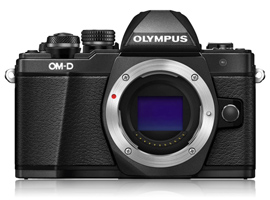






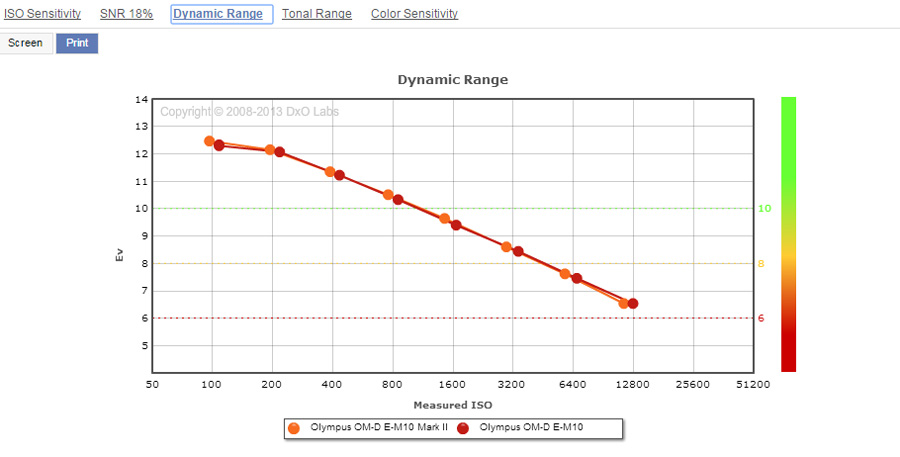


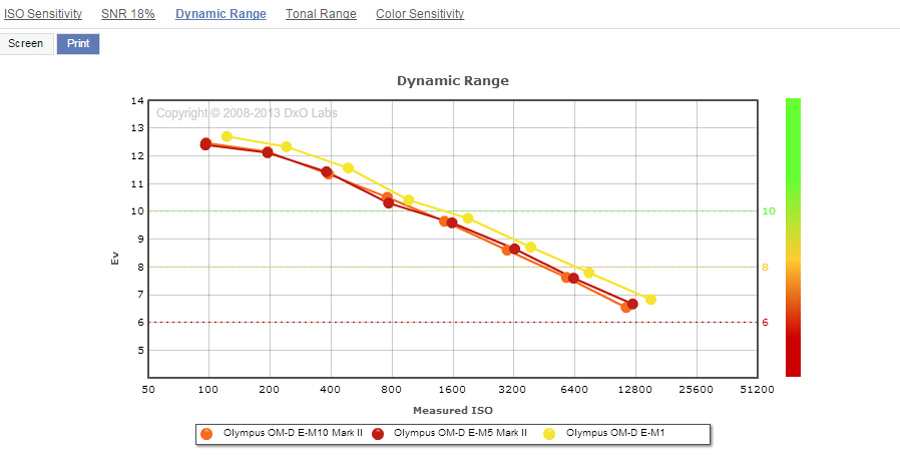
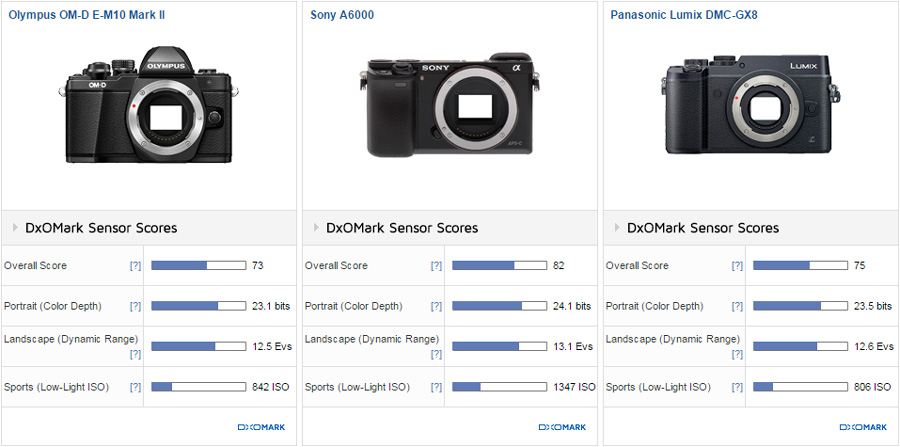
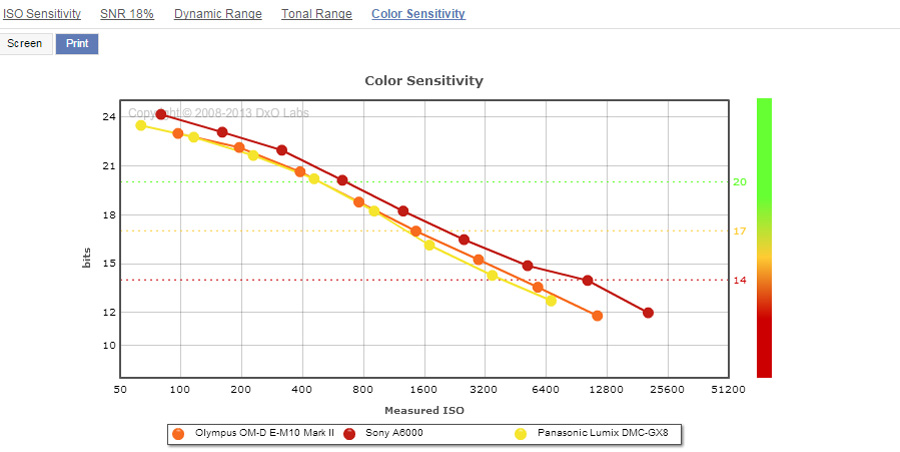

DXOMARK encourages its readers to share comments on the articles. To read or post comments, Disqus cookies are required. Change your Cookies Preferences and read more about our Comment Policy.